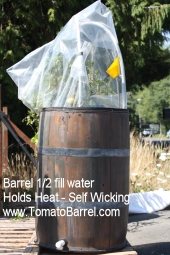posted 12 years ago
Biotic soil components
Typical number or length
(in one handful of soil)
Typical biomass
(pounds/acre)
Plant roots
Plant residues (both roots and shoots) are the ultimate source of almost all carbon (energy) for soil organisms
There may be 1,000 times more soil microorganisms near plant roots than in soil further away from roots
60 – 150 inches
(annual crops)
1,500 – 3,000 inches
(perennial grasses)
3,000
(annual crops)
15,000
(perennial grasses)
Bacteria
Along with fungi, are the most important group in organic matter decomposition
Extracellular compounds help bind soil particles into aggregates
Specialized groups are involved in each portion of the nitrogen cycle
300 million – 50 billion
400 – 4,000
Fungi
The most important group involved in decomposing resistant compounds such as lignin
Hyphae grow extensively through soils, helping bind soil particles in aggregates
Some specialized fungi grow symbiotically with plant roots, increasing nutrient and water uptake and decreasing disease incidence
500,000 – 100 million
500 – 5,000
Actinomycetes
Type of bacteria with growth form similar to fungi; functions similar to both
Produce compounds that give soil its distinctive aroma
100 million – 2 billion
400 – 4,000
Nematodes
Are the most numerous animals in the soil
Help accelerate decomposition when they graze on bacteria, fungi and plant residues
1,000 – 10,000
5 – 50
Protozoa
Help accelerate decomposition when they graze on bacteria, fungi and plant residues
100,000 – 50 million
5 – 100
Arthropods
Help accelerate decomposition when they (mites, collembolan and other insects) graze on bacteria, fungi and plant residues
Collembola, shown in this photograph, are an important arthropod in plant residue decomposition
100 – 1,000
1 – 10
Earthworms
Burrowing activity mixes soils and creates macropores that increase water infiltration and flow and help aerate soil
Soil passage through guts increases aggregation and nutrient cycling
0 – 2
10 – 40
Iterations are fine, we don't have to be perfect
My 2nd Location:Florida HardinessZone:10 AHS:10 GDD:8500 Rainfall:2in/mth winter, 8in/mth summer, Soil:Sand pH8 Flat











